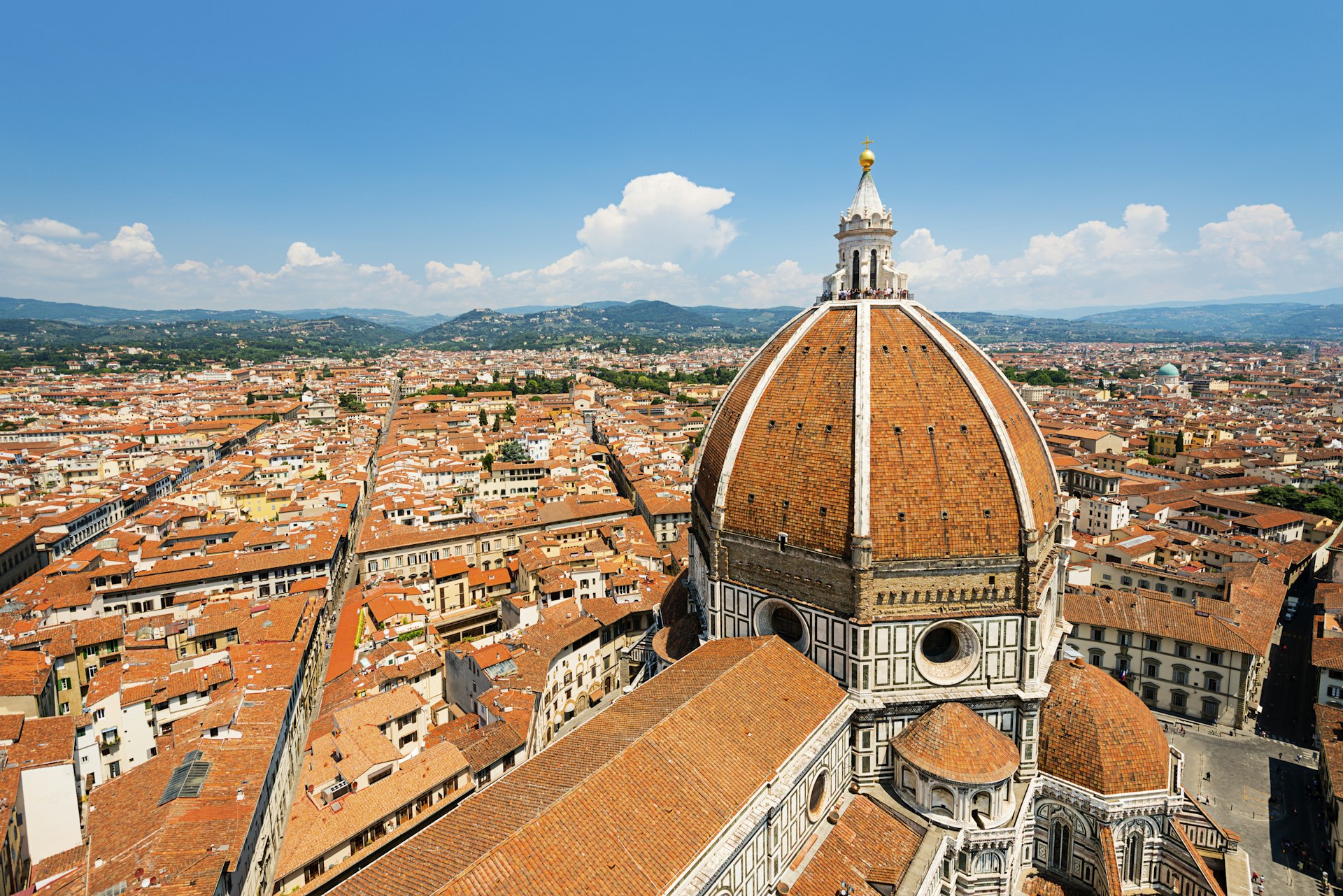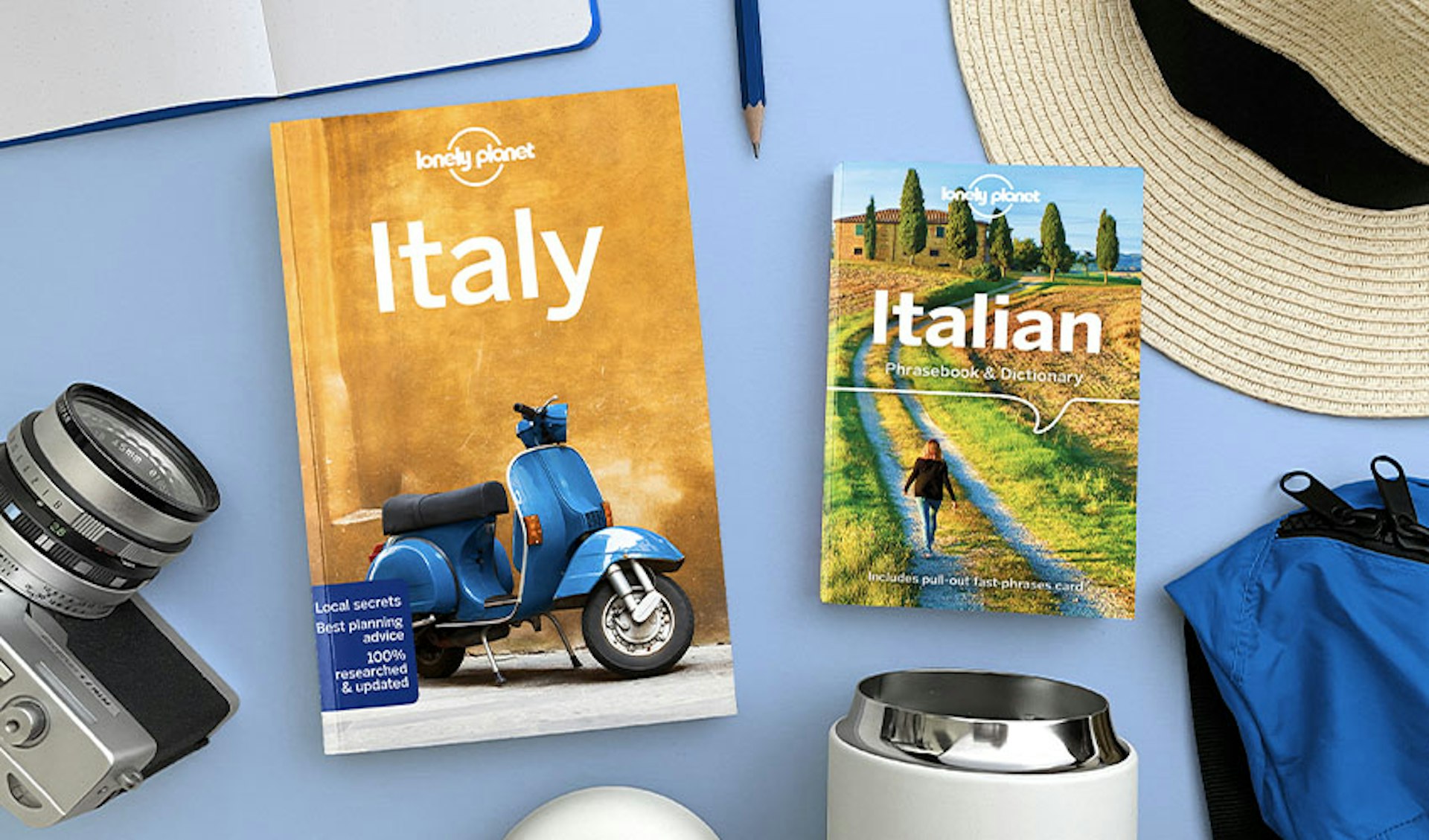Unexpectedly small as it is, Florence looms large on the world's "must-see" lists – and not just for its unmatched treasure chest of Renaissance art. With its vast and varied choice of museums, monuments and urban palazzo gardens, the capital of Tuscany in northwestern Italy warrants far more time than a mere weekend.
But rethink traditional sightseeing. The heartbeat of this ancient, tourist-crowded city on the banks of the Arno is la dolce vita. Bursting with brilliant contemporary creativity, backdropped by history and anchored by family, faith and food, Florentine lifestyle is the real attraction – an electric, heartfelt mix of old and new. Here are the best things to do in Florence.
Embrace the new pop-up Uffizi
Italy’s most iconic gallery, the Galleria degli Uffizi, has lured art lovers into its Florentine lair since 1769 when the government palace-turned-art museum opened to the public. And there’s no denying the timeless thrill of eye-balling the world’s largest collection of Italian Renaissance art, gorging on two entire rooms crammed with Botticelli masterpieces and ogling at 6000 mother-of-pearl shells encrusting the ceiling of the Medici’s spectacular treasure-chest Tribuna.
With such a long and invincible track record, the Uffizi’s new-gen sustainability "Diffusi" project can only succeed. To spread the tourist load, it is displacing selected masterpieces to unconventional pop-up venues – chapels, hilltop forts, abandoned villas, you name it – in less-trodden parts of Florence and Tuscany. Embrace it.
Tap into Florence’s contemporary Renaissance
Contemporary Florence gives the old Renaissance a serious run for its money with a head-turning portfolio of creative thinkers and doers. Artistic brilliance has always been the city’s lifeblood and exhibitions at experimental-arts center Manufattura Tabacchi, in an upcycled 1930s tobacco factory, are a one-stop shop for tapping into today’s dynamic artist, artisan and designer community. In the historic center Palazzo Strozzi is another sharp art hub.
Artist-run guesthouses AdAstra and SoprArno Suites, with interior decor mixing vintage curiosities with the aspirational calligraphy of local designer Betty Soldi, provide an easy introduction to Florence’s creative scene. Collaborations between calligraphers, carpenters, florists, jewelers, leather artisans, and all sorts of modern craftsmanship, are constantly popping up in Florence. Artsy events promoting biodiversity, sustainability and bee awareness by eco-brand Lady Ripple beautifully illustrate just how well this city is rethinking art.
Hobnob on rooftops
The Tuscan capital’s on-trend catwalk parade of fashionable rooftop lounges and bars demand serious hobnobbing with a chichi set, preferably over a quintessential aperitivo (pre-dinner drinks with lavish snacks). Enjoy the city from a bewitching new perspective – 360° to be precise – at uber-cool Angel Roofbar (with plunge pool, flower garden, live DJ sets and stunning craft cocktails atop Hotel Calimala on Piazza della Repubblica), or poolside with budget travelers in the Student Hotel sky bar. Dozens more rooftops pepper the skyline.

Get acquainted with the superstar Duomo
Superstar of Florence’s famous city skyline, the spectacular Duomo is up there with Rome's Colosseum and Pisa's Leaning Tower as Italy's A-lister icons. The cathedral's polychromatic marble facade is gargantuan and striking. But what makes the building so sensational is Filippo Brunelleschi's distinctive red-tiled cupola, one of the world's greatest architectural achievements (learn about its construction in the neighboring Museo dell’Opera del Duomo). Spiral the staircase to the base of the dome, peer down on the toy-like cathedral interior and up at its frescoed cupola – then climb some more for a heart-pounding panorama of Florence laid out majestically at your feet.
Lose the crowd in spiritual San Marco
One step removed from the mainstream tourist circuit, the peaceful university district of San Marco squirrels away one of Florence's most spiritually uplifting and captivating art experiences. At home in the 15th-century Dominican monastery where the wickedly devout Savonarola and artistic genius Fra' Angelico both served God, the largely unsung Museo di San Marco safeguards original works by "il Beato" (the blessed), as the gifted friar was known. No fresco better portrays the humanist spirit of the Renaissance than Fra' Angelico’s exquisite Annunciation (c1440).
An equally emotive experience awaits at San Marco’s captivating Museo degli Innocenti, exploring the history of this foundling hospital which later became Europe’s first orphanage. Brunelleschi of Duomo fame designed its striking loggia – the false door surrounded by railings was once a revolving door where unwanted children were left. Don’t miss the museum’s rooftop cafe with a sensational city view.
Fuel up in a traditional trattoria
Florence’s charismatic mix of old and new, tradition and innovation, spills over into its cuisine. Florentines share an enormous pride in their culinary tradition which has relied on locally sourced, seasonal produce long before "sustainability" and "zero-kilometer" became buzzwords – and feasting on traditional dishes in a time-tested trattoria is an absolute highlight. Order a fueling bowl of cockle-warming ribollita (bean, bread and veg soup) in traditional trattorie Osteria I Buongustai or Trattoria Le Mossacce, a tripe panino at family-run tripe truck Trippaio Sergio Pollini, or a brilliantly blue T-bone steak served in a market trattoria unchanged since 1915, to understand why. To really get under the skin of Florentine cuisine, join Curious Appetite for a hands-on cooking class, culinary tour or guided tasting.
Explore contemporary kitchens
Raw cuisine, fish bistros, craft cocktails and the dazzling creativity of modern young Tuscan chefs add contemporary edge to Florence’s exceptional dining scene. Original rebel chef, Fabio Picchi, was the first to disrupt the Florentine dining scene way back in 2003 with eccentric Il Teatro del Sale in foodie ’hood Sant’Ambrogio. Tuscan-Asian fusion kitchen Ciblèo is the creative chef’s latest challenge to culinary tradition. Experimental San Frediano is another top neighborhood for contemporary innovation in the kitchen (reserve a table at IO Osteria Personale), as is the artsy Oltrarno where one of Florence’s most talented chefs, Simone Cipriani, steals the show at Essenziale.

Trail David around town
No visitor to Florence leaves without checking out Michelangelo's world-famous statue of David inside the Galleria dell'Accademia. And yes, no photograph quite prepares you for the dazzling luminosity and gracefulness of the real thing, complete with rippling muscles, bulging veins and highly charged gaze in anticipation of the giant he is about to slay. Flesh out the story with a walking tour of Florence’s "fake" Davids: the life-sized copy on Piazza della Signoria where the original stood until 1873, the much-photographed copy on Piazzale Michelangelo, and the different Davids sculpted by other artists in Museo del Bargello.
Explore off-beat with a DIY tour
Exploring Florence on foot or by bike is hands down the finest way to take it all in. Since the COVID pandemic emptied Florence of its infamous tourist crowds in 2020, the city has worked hard to reinvent its tourism wheel. Themed DIY walking, cycling and jogging tours on its Feel Florence app lure visitors away from the tourist honeypots and encourage go-slow, off-beat exploration. Intriguing themes include historic pharmacies, Family Florence, Dante, tower houses, gold, La via degli dei (The way of gods), folk traditions, not to mention a gaggle of Florentine neighborhoods you have most likely never heard of (Isolotto, Galuzzo, Gavinana…).
Admire unsung Michelangelos
Michelangelo’s blockbuster David is an undisputed, once-in-a-lifetime must-see. But for serious art lovers, the sensual beauty of a stash of lesser-known Michelangelo sculptures adorning lavish Medici tombs in the Medici chapels are the real highlight. Real goose-bump stuff, the hauntingly beautiful tomb sculptures depicting Night and Day, Dawn and Dusk, and Madonna and Child, were all sculpted by Michelangelo in the 1520s and 30s and are a powerful contrast to the surrounding ostentatious orgy of precious jewels and stones inside the chapels.
Prize for "most unexpected Michelangelo creation in Florence" goes to the extraordinary staircase in the vestibule of the Biblioteca Medicea Laurenziana, commissioned in 1524 behind the San Lorenzo basilica to house the extensive Medici library.

Shop with style
Italy's matchless fashion industry was born and bred in Florence. Homegrown designers Guccio Gucci and Salvatore Ferragamo opened haute-couture boutiques in Florence in the 1920s and shopping in the Tuscan capital has been insanely stylish ever since. A-lister fashion houses lace the city’s historic shopping strip Via de' Tornabuoni and an irresistible Pandora's box of specialist boutiques selling all manner of beautiful objects rub shoulders with family-run botteghe (workshops) in medieval backstreets. Watch fourth-generation Florentine goldsmiths and shoemakers at work, buy artisan scents evocative of the Florentine countryside and Tuscan sea breeze, and know the tag "Fiorentina" is one of the finest international labels going.
Uncover cafe culture
Local life revolves around catching up with friends over coffee or aperitivo (early evening drinks and snacks) on a sun-flooded pavement terrace overlooking a fountain-stitched piazza. And there’s a cafe to match every mood and moment: hit historic cafe Caffè Rivoire for winter-warming hot chocolate and people-watching; genteel Procacci for turn-of-the-century hipster hobnobbing; and Caffè degli Artigiani for backstreet chill in artisanal Oltrarno. Or enjoy a sneak peek at the future of Italian coffee at Ditta Artigianale Carducci, in a centuries-old convent with refectory, cloister and courtyard garden in Sant’Ambrogio. This latest opening from Florence’s on-trend micro-roastery will host an international scuola del caffè (coffee school) with roasting courses and a specialist barista shop as well as a wildly fashionable coffee shop.
Delve backstage in Medici Florence
No single building evokes the power and glory of Renaissance Florence and the powerful Medici dynasty like monumental Palazzo Vecchio, a cinematic fortress with crenelated tower (don’t miss the bird’s eye city view from the top) and labyrinthine interior bursting with secret rooms, closets and tunnels. To get the most out of this dynamic, thoughtful museum, reserve a slot on one of its fabulously imaginative guided tours – fantastic for families.
You can’t get more "backstage" with the Medicis than the Corridoio Vasariano, a covered passageway built for the dynasty to allow them to walk between their trio of Florentine palaces (Palazzo Vecchio, the Uffizi and Palazzo Pitti) in complete privacy. Off-limits for years, the corridor reopens to visitors in 2022 after a €10 million makeover. The "new look" walkway will display statues, restored frescoes that decorated the corridor facade in the 16th century, and memorials to the WWII and 1993 bombings of Florence.
Enjoy the sunset show
Every city has its moment and in Florence it takes place every day at sunset. Key spots to watch the handsome Florentine cityscape turn soft pink, orange, fiery amber and fifty shades in between include any bridge across the Arno or along the river banks; with David on hilltop Piazzale Michelangelo; the panoramic terrace of Romanesque basilica San Miniato al Monte; and higher up again between 16th-century battlements at Forte di Belvedere (summer only).
Or join locals in the more intimate Giardino delle Rose or Giardino dell’Iris – a twinset of historic hillside gardens in Oltrarno, perfumed in late spring and early summer with flower blossoms and included in Florence’s Unesco World Heritage area since 2021.
Safety recommendations and restrictions during a pandemic can change rapidly. Lonely Planet recommends that travelers always check with local authorities for up-to-date guidance before traveling during Covid-19.
You might also like:
The best freebies in Florence for budget travelers and bargain hunters
Here's why Florence is perfect for your next winter break
Florence's best neighborhoods: dining, duomos and la dolce vita



